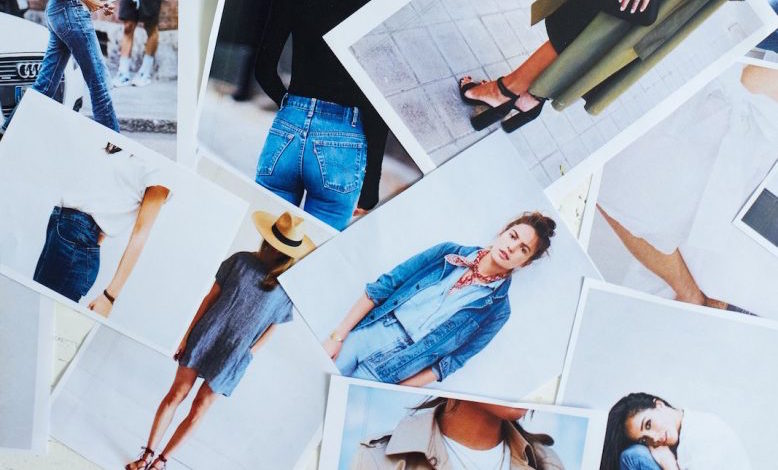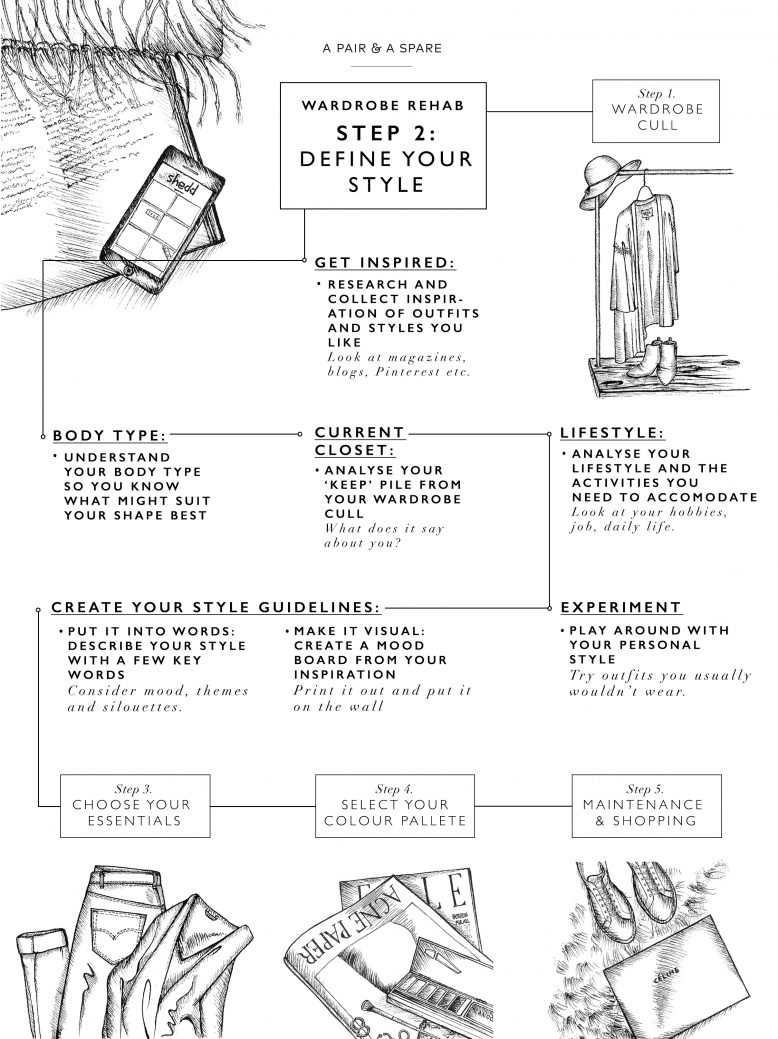In contrast to fashion, style is your own unique and individual taste in clothes.
Basically, you want the clothes in your wardrobe to speak your style language so you’re communicating who you are through what you wear – and doing it well. A well defined sense of style speaks of your own knowledge of yourself and enforces your self confidence when facing the outside world. Interestingly a lot of you asked questions about how to define your style in our first post, it seems it’s a sticking point for many of us. I used to struggle too! Wearing anything and everything and wondering why I never felt confident in my outfit. But over time I have developed my sense of style, and we’re hoping to help you do that too.
In this second post in the Wardrobe Rehab series (see the first here), we’ve once again partnered with our friends at the fashion marketplace Shedd (have you downloaded the app yet?) to help you define your style better. Take a weekend out to follow these steps! You’ll be so glad you did. We’ve created a little flow chart of the steps for you, read on for more details.
Analyse
Research and collect inspiration
Collect images of aesthetics you like from magazines, blogs or Pinterest can help inform you of the styles, shapes and colours that you gravitate towards. When doing your research, try to look past elements of fashion and trends and focus more on the clothes themselves: silhouettes, fabrics, patterns, colour and texture, and try to be realistic about looking for outfits that you would actually wear. We’ve found Shedd to be a great research tool for this because you can see inside other people’s wardrobes, so download it if you haven’t already and have a look around!
Understand your body type (but don’t let it define you)
Knowing your body shape and what looks good on you is a (somewhat) useful tool to helping understand your personal style. Take a look at our chart at the bottom of the post below. However, we believe that understanding your body shape isn’t about boxing you into a certain formula of dressing or obsessing over how to look perfect at the cost of being happy in what you are wearing. On the contrary, by getting a good feel of what suits and flatters you most, it gives you the freedom to experiment, and also gives you the confidence to know which rules to break/stick to and when.
Analyse your ‘keep’ pile from your wardrobe cull
The clothes you kept from your wardrobe cull say a lot about your style as they are the clothes you feel comfortable and confident wearing and look good on you. Now it’s time to understand why. What are their characteristics? What do I like about them? What do they say about my future shopping purchases? Try to be specific about fabrics, cuts and shapes. However, you don’t have to let this pile define you either, but use it as a foundation to grow and develop.
Consider your lifestyle
What you do day-to-day, whether it’s going to parties, meetings or running marathons, plays a big part in how your wardrobe should be shaped. For someone like me that’s not too hard – home/studio/weekend it’s pretty much all the same. On the other hand, rationalising two very different lifestyles (the yogi lawyer or student secretary) means you’ll need to develop capsule wardrobes for those parts of your life. It’s important to have your own personal style influence those capsules too, so you always feel like you.
Experiment
Now it’s time to play around with your personal style – because sometimes what you’re used to doesn’t equate to what you like or what makes you feel good. Try these little experiments below and see how they make you feel.
– Go into 3 stores and try on 50 different items. Make a pile of the things that work and those that didn’t. Is there a pattern?
– Make outfits out of colours you would never usually wear. How do you feel?
– Have a friend dress you up in an outfit they would typically wear. How do you feel?
– Create an outfit with a silhouette that is the opposite of what you would usually wear. Thought?
– Using Pinterest or the Shedd app, find 5 pieces of clothing that you would love to wear but are too scared to. Ask yourself what you’re afraid of?
Create your style guidelines
Once you’ve analysed your tastes, what suits you and your lifestyle, it’s time to put that all together into guidelines that will help you shape your closet decisions and personal style choices in a meaningful way.
Visuals
Creating a mood board is a great way to summarise and establish the overall look and feel you want from your wardrobe. This will help you identity certain patterns in the outfits you like or the types of fabric and colours you are drawn to. Coupled with a knowledge of what suits your body type, this will better afirm what your personal style is and help you direct your wardrobe rehab down the right aesthetic path. For me, you can see I stick to clean, minimal palettes, figure hugging silhouettes and simple pops of colour – a classic look.
Words
If you had to explain your personal style to a stranger as 5 – 10 elements, what would they be? Consider colours, shapes, overall themes, moods, etc. Things to think about include:
• Mood: How do these clothes make you feel?
e.g. feminine, elegant, modern, casual
• Theme: How can you describe this style using abstract terms?
e.g. minimalist, bohemian, preppy, classic
• Lines: What shapes and silhouettes do you see?
e.g. structured, owing, hourglass, boxy
Similarly, while these words don’t necessarily define the clothes you can and can’t wear, they give good insight into your core personality and style because at the end of the day, the clothes you wear should be able to represent who you are. To help, we’ve created a cheat sheet of the above steps which you can download and print out here.
Once you’ve got a better idea of your style, we suggest doing another review or cull of your wardrobe, this time analysing your clothing based on what you have learnt about your style.
Below we’ve created this Body Type Guide for you to take a look at below to understand your shape better. You’ll notice that we’ve highlighted things to note and styling ideas, but we want to reiterate that these are just suggestions. There’s no point in obsessing over body type rules if you’re not happy, although I personally do find them useful for dressing my own shape. It’s all up to you!
This post is in collaboration with the fashion marketplace app Shedd.
If you have any questions about defining your style, we’d love to hear!














